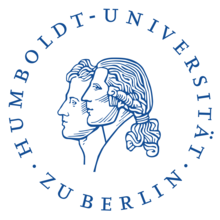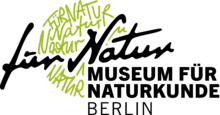With its wide range of holdings, the Kunstkammer, which was housed in the Berlin Palace from the sixteenth to the nineteenth century, formed the basis for numerous later museums. Objects of nature, art, and science were united in the collection. Today, many objects that previously belonged to the Kunstkammer are distributed throughout the museums of Berlin. The present DFG project, a cooperation between the Staatliche Museen zu Berlin, the Humboldt-Universität zu Berlin, and the Museum für Naturkunde Berlin, researched the collection and the historical paths that brought its objects into present-day museums.
Here the history of the Berlin Kunstkammer is told through the “biographies” of its objects: how did they find their way into the collection? What uses and functions did they serve before their integration into the Kunstkammer, and in what new taxonomic, spatial, presentational, and functional contexts did they participate as objects in the collection? How did they come to be transferred to the museums that were established in the nineteenth century? And what meanings were assigned to them in the course of these processes?
With these questions as the point of departure, the project observes the Kunstkammer throughout the different historical stages of its transformation, including the reorganizational processes of the seventeenth and eighteenth centuries as well as the changed form of the collection after the deaccessioning of various types of objects in the nineteenth century. The tremendous enrichment of the Kunstkammer through extensive private collections in this late phase of its development is examined, as is the role of its objects in the founding of new museums. Viewed from this object-biographical standpoint, the Kunstkammer reveals facets of the history of the Berlin collections that have heretofore received little attention and offers new perspectives for the history of collecting in general, beyond the borders of Prussia and Berlin.
The results of the project are published in book form as well as in this virtual research environment.
Duration: October 1, 2018 – June 30, 2022
Funded by the Deutsche Forschungsgemeinschaft (DFG)
Team
Project directors
Prof. Dr. Horst Bredekamp (Humboldt-Universität zu Berlin, Institut für Kunst- und Bildgeschichte)
Prof. Dr. Michael Eissenhauer, Dr. Angela Fischel (Staatliche Museen zu Berlin)
Prof. Johannes Vogel, Ph.D., Anita Hermannstädter M.A. (Museum für Naturkunde Berlin)
Research assistants for the project
Dr. Marcus Becker, Rosa Miriam Reinhardt M.A., Dr. Kay Usenbinz, Dr. Sarah Wagner (Humboldt-Universität zu Berlin, Hermann von Helmholtz-Zentrum für Kulturtechnik)
Dr. Eva Dolezel, Annika Thielen M.A. (Staatliche Museen zu Berlin),
Dr. des. Meike Knittel, Dr. Diana Stört, Marna Schneider B.A. (Museum für Naturkunde Berlin)
Concept and implementation of data model (research environment)
Dr. Sarah Wagner
Content conception, data collection, editing (research environment)
Dr. Sarah Wagner
Rosa Miriam Reinhardt M.A.
Dr. Diana Stört
Dr. des. Meike Knittel
Transcription Workshop MfN
Web design and web development (research environment)
Dipl.-Designerin Claudia Bachmann
Sebastian Delius (enlightenment* – Agency for Kulturtechnik)
Dipl.-Inf. Mark Fichtner (Germanisches Nationalmuseum)
Translation (research environment)
Melissa Thorson
Consulting, operation, and archiving (research environment and research data)
Michael Willenbücher M.A. (Humboldt-Universität zu Berlin, Hermann von Helmholtz-Zentrum für Kulturtechnik)
Prof. Dr. Andreas Bienert (Staatliche Museen zu Berlin)
Falko Glöckler (Museum für Naturkunde Berlin)
Dr. Sabine von Mering (Museum für Naturkunde Berlin)
Other Cooperation Partners
Berlin-Brandenburgische Akademie der Wissenschaften
Forschungsverbund Marbach Weimar Wolfenbüttel
Franckesche Stiftungen
Geheimes Staatsarchiv – Preußischer Kulturbesitz
Germanisches Nationalmuseum
Historische Arbeitsstelle – Museum für Naturkunde Berlin
Sächsische Landesbibliothek – Staats- und Universitätsbibliothek Dresden
Staatsbibliothek zu Berlin – Preußischer Kulturbesitz
Universitätsbibliothek Heidelberg
Zentralarchiv der Staatlichen Museen zu Berlin – Preußischer Kulturbesitz
Research on Location
The research concept of the project called for a fundamental reexamination of the manuscript sources in the archives. On the one hand, this work was made more difficult by the pandemic that occurred during the course of the project; on the other, it was made easier by the establishment of a transcription workshop at the Museum für Naturkunde.
The study of the written sources and surviving collection objects was complemented by strategies for visualizing the lost collection rooms. A working model of the spaces in the Berlin Palace, produced by designer Julia Blumenthal in the workshop of the excellence cluster “Matters of Activity,” enhanced the discussion of historical scenarios of exhibition and viewing at the Kunstkammer. A floor plan drawn in chalk at a scale of 1:1 in the courtyard of the Museum für Naturkunde visualized the real dimensions of the premises where the (object) histories narrated in the project actually transpired.


